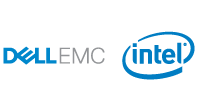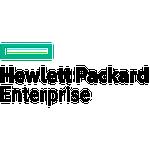Dell™ PowerVault™ MD3000i 5000 Mailbox Single Copy Cluster Microsoft® Exchange 2007 Storage Solution
sponsored by DellEMC and Intel®
WHITE PAPER:
This document provides information on Dell's PowerVault MD3000i Plus MD1000 storage solution for Microsoft Exchange Server 2007, based on Microsoft Exchange Solution Reviewed Program (ESRP) Storage program.
Posted: 27 Aug 2008 | Published: 27 Aug 2008

|

|
|
Oracle WebLogic Server - A Solid Foundation for SOA
sponsored by Oracle Corporation
WHITE PAPER:
This white paper shows how Oracle WebLogic Server supports the next generation of enterprise applications and services. Learn how to leverage the Java EE 5 advantage and dramatically speed development of SOA applications.
Posted: 13 May 2009 | Published: 04 Nov 2008

|

|
|
The Complete Network Assessment
sponsored by Dorado Software
WHITE PAPER:
This paper gives a brief overview on how a complete network inventory assessment can improve the health & security of network.
Posted: 19 Nov 2008 | Published: 19 Nov 2008

|

|
|
A Closer Look at Windows Vista
sponsored by National Instruments
WHITE PAPER:
One of the stated goals of the Microsoft Windows Vista release is to greatly improve the overall security of the Windows operating system and curb the impact of malware. To this end, Microsoft redesigned both the least user and administrative...
Posted: 19 Feb 2008 | Published: 19 Feb 2008

|

|
|
IDC White Paper: Diskless PCs: The Evolution of Enterprise PCs
sponsored by DellEMC and Intel®
WHITE PAPER:
Diskless PCs used in conjunction with image streaming software can provide a PC performance and compatibility experience that is identical to that of a standalone machine, but with all the benefits that centralized environments enable.
Posted: 23 Jan 2008 | Published: 01 Jun 2007

|

|
|
Best Practices in Contract Management: How to Shrink Your Sales Cycle through Smart Contract Management
sponsored by SpringCM
WHITE PAPER:
This white paper discusses the seven best practices in contract management. It's time for you to think about how to manage your contracts more effectively, close more deals, and get more cash. Learn how in this paper.
Posted: 16 Apr 2008 | Published: 11 Oct 2010

|

|
|
HP Integrity Systems: Family Guide
sponsored by Hewlett Packard Enterprise
WHITE PAPER:
The HP Adaptive Infrastructure portfolio creates the foundation for delivering better business outcomes by enabling you to reduce operational costs, accelerate speed of IT change, and deliver higher quality of service to the business.
Posted: 16 Oct 2008 | Published: 16 Oct 2008

|

|
|
VeriSign Mobile Enterprise Services: Enabling Next-Generation Mobile Messaging for Enterprises
sponsored by VeriSign, Inc
WHITE PAPER:
This Solution Paper provides an overview of the rapidly growing mobile messaging and alerts market, and introduces a solution that addresses that market: VeriSign Mobile Messaging, an offering of VeriSign Mobile Enterprise Services (VMES).
Posted: 05 Jun 2009 | Published: 02 Dec 2008

|

|
|
EMC Documentum Enterprise Records Management: The Problem of Enterprise Records Management
sponsored by EMC Corporation
WHITE PAPER:
This paper examines how one solution provider, EMC, is helping customers address electronic discovery challenges by helping customers manage their information infrastructure more effectively.
Posted: 13 Mar 2008 | Published: 01 Aug 2007

|

|
|
Leverage ERP for Sales & Operations Planning
sponsored by IFS
WHITE PAPER:
Read this white paper to learn how to use your ERP to facilitate Sales and Operations Planning (S&OP), which helps manufacturers rapidly adjust to changes in the market.
Posted: 12 Jan 2009 | Published: 12 Jan 2009

|

|